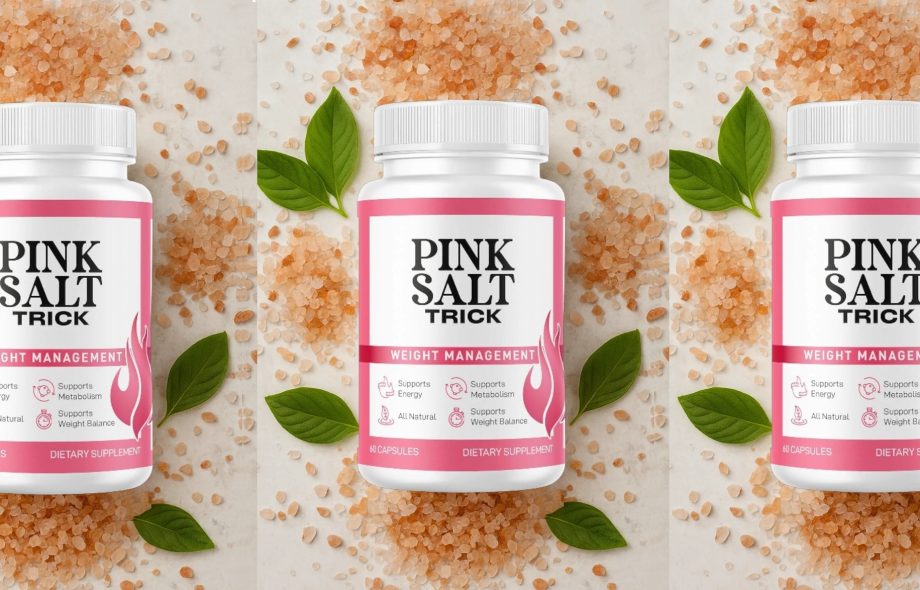If you scroll through wellness feeds on social media, you’ve likely encountered the “Pink Salt Trick.” Influencers and health enthusiasts are dissolving a pinch of pink Himalayan salt into their morning glass of water, touting it as a life-changing habit for energy, hydration, and overall well-being.
The trend, sometimes called “sole water” (pronounced so-lay) or a simplified “adrenal cocktail,” is simple: add a small amount of pink salt to your water first thing in the morning on an empty stomach. The claims are impressive, ranging from balancing your body’s pH to boosting energy levels and clearing your skin.
But what does science say? Is this a genuine health hack or just another wellness trend with more hype than substance? Let’s break down the claims and the reality behind the Pink Salt Trick.
The Claims: What Are the Purported Benefits?
Advocates of the pink salt trick claim it offers a host of benefits, primarily centered around its mineral content and electrolyte properties.
Enhanced Hydration: The primary argument is that adding salt to water helps your body absorb it more effectively. The sodium helps your cells retain water, preventing it from being flushed out too quickly, thus leading to better hydration.
Electrolyte Replenishment: Pink Himalayan salt contains electrolytes like sodium, potassium, and magnesium. The theory is that drinking this mixture replenishes electrolytes lost overnight, leading to better muscle function and energy levels.
A Boost of Trace Minerals: Unlike processed table salt, Himalayan pink salt is lauded for containing up to 84 different trace minerals and elements, including iron (which gives it its characteristic pink hue), calcium, and potassium.
Improved Energy and “Adrenal Support”: Many proponents link the morning salt drink to supporting the adrenal glands, which regulate stress hormones. The idea is that this “adrenal cocktail” helps combat fatigue and provides a natural energy boost without caffeine.
Detoxification and Digestion: Some claim that salt water stimulates stomach acid and enzymes, improving digestion and helping the body “detoxify” itself.
The Science: Separating Fact from Fiction
While the claims are appealing, it’s crucial to examine them through a scientific lens.
A Grain of Truth: The Role of Electrolytes
The most scientifically sound claim is related to electrolytes. Sodium is indeed a critical electrolyte essential for nerve function, muscle contraction, and maintaining fluid balance. When we sweat heavily, such as during intense exercise or in extreme heat, we lose both water and electrolytes. In these specific cases, a drink containing sodium can be more hydrating than plain water. This is the principle behind sports drinks.
However, for the average person who hasn’t engaged in strenuous activity, their electrolyte levels are typically well-regulated by the body. Drinking salt water upon waking is likely unnecessary for hydration.
The Mineral Myth
While it’s true that Himalayan salt contains trace minerals, the quantity in a single pinch is nutritionally insignificant. The amount of magnesium, potassium, or calcium you get from your daily salt water is minuscule compared to what you would get from a single banana, a handful of almonds, or a cup of yogurt. Relying on pink salt for your mineral intake is like trying to fill a swimming pool with an eyedropper.
Sodium is Still Sodium
Here lies the biggest caveat. Chemically, Himalayan pink salt is about 98% sodium chloride (NaCl), the same as regular table salt. The remaining 2% consists of trace minerals. While it may be less processed, your body primarily registers it as sodium.
General health guidelines recommend limiting sodium intake to less than 2,300 milligrams per day for most adults. Consistently adding extra salt to your diet, even in small amounts, can contribute to exceeding this limit. Over time, high sodium intake is a well-established risk factor for high blood pressure, heart disease, and stroke.
“Adrenal Fatigue” and “Detox”
The concepts of “adrenal fatigue” and needing to “detox” your body with special concoctions are not widely supported by mainstream medical science. “Adrenal fatigue” is not a recognized medical diagnosis. Your liver and kidneys are incredibly efficient organs designed to filter and remove waste products from your body 24/7. They don’t require help from a glass of salt water.
The Verdict: Should You Try It?
So, is the Pink Salt Trick a miracle or a myth? The answer lies somewhere in the middle, but leans heavily towards myth for the general population.
For elite athletes or individuals working in extreme heat: A small amount of salt in water might offer a marginal benefit for rehydration. Even then, a balanced electrolyte drink is often a better-formulated option.
For the average person: The Pink Salt Trick is likely unnecessary and potentially counterproductive. The mineral benefits are negligible, and the added sodium poses a long-term health risk. Plain water is perfectly effective at hydrating the body, and a balanced diet is the best way to get your essential minerals.
Instead of looking for a shortcut in a salt shaker, focus on the proven pillars of health:
Drink plenty of plain water throughout the day.
Eat a varied, whole-foods diet rich in fruits, vegetables, nuts, and seeds to get a wide array of minerals.
Listen to your body’s thirst cues.
Ultimately, the Pink Salt Trick is a classic example of a wellness trend that magnifies a kernel of scientific truth into a cure-all. While not acutely dangerous in small amounts, it’s far from the magic elixir it’s made out to be. Your health is better served by saving the fancy pink salt for seasoning your food, not your water.
 :
https://in.pinterest.com/pin/761741724514716936
:
https://in.pinterest.com/pin/761741724514716936

